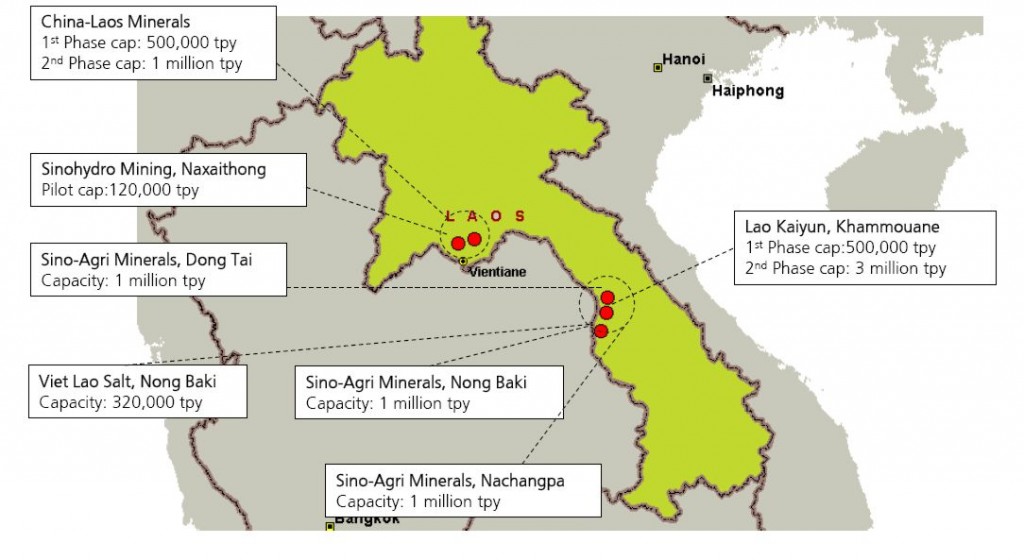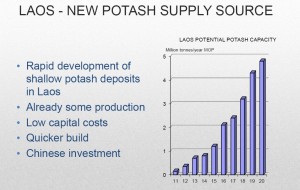Laos: Potash and Bombs
Potash
I have been doing a little research of late on Laotian potash. It is a very interesting opportunity and worth more investigation.
Russian companies produce around half of the world’s 30 million tonnes of annual potash production, followed by Canada with about a quarter of total production. Laos produced about 600,000 tonnes in 2013, with plans for significant expansion as shown in the image below.
Courtesy www.integer-research.com
The term “potash” refers to soluble potassium salts or compounds, the most common of which is potassium chloride. Together with phosphorus and nitrogen, it is one of the three major fertilisers. It is also used in a number of industrial processes.
In 2012 Laos banned any new mining concessions in response to the social and environmental concerns of landholders. Neighbouring Thailand is also highly prospective for potash and also has similar landholder concerns.
However early this year the Vientiane government said that it was reviewing the ban. This review is due, in part, to government plans to increase exports of mineral products. The main minerals and metals produced in Laos are gold, copper, potash, gypsum and iron ore.
Laos has great upside for increasing potash production, as shown in the image below.
Courtesy http://fertecon.agra-net.com/
Bombs
Completely off-topic but during my brief research on potash I discovered what the US did to the country during the attempted defeat of Vietnam. The east of the country, adjoining Vietnam, was part of the American-defined “Ho Chi Min Trail”.
Two million tonnes of bombs, 80 million cluster bombs, tens of thousands killed or maimed since the end of the war. It’s appalling that the Americans haven’t cleaned up, so many decades later.


